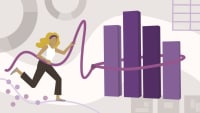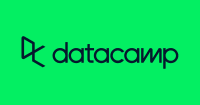Description
In this course, you will :
- R can assist you in finding your way.
- R is a statistical programming language used to analyse and visualise large amounts of data.
- This training series provides an in-depth introduction to R, including detailed instructions for installing and navigating R and RStudio, as well as hands-on examples ranging from exploratory graphics to neural networks.
- demonstrates how to install R and popular R packages and begin importing, cleaning, and converting data for analysis.
- Also demonstrates how to create visualisations such as bar charts, histograms, and scatterplots, as well as transform categorical, qualitative, and outlier data to best meet your research questions and algorithm requirements.
Syllabus :
1. What Is R?
- R in context
- Data science with R: A case study
2. Getting Started
- Installing R
- Environments for R
- Installing RStudio
- Navigating the RStudio environment
- Entering data
- Data types and structures
- Comments and headers
- Packages for R
- The tidyverse
- Piping commands with %>%
3. Importing Data
- R's built-in datasets
- Exploring sample datasets with pacman
- Importing data from a spreadsheet
- Importing XML data
- Importing JSON data
- Saving data in native R formats
4. Visualizing Data with ggplot2
- Introduction to ggplot2
- Using colors in R
- Using color palettes
- Creating bar charts
- Creating histograms
- Creating box plots
- Creating scatterplots
- Creating multiple graphs
- Creating cluster charts
5. Wrangling Data
- Creating tidy data
- Using tibbles
- Using data.table
- Converting data from wide to tall and from tall to wide
- Converting data from tables to rows
- Working with dates and times
- Working with list data
- Working with XML data
- Working with categorical variables
- Filtering cases and subgroups
6. Recoding Data
- Recoding categorical data
- Recoding quantitative data
- Transforming outliers
- Creating scale scores by counting
- Creating scale scores by averaging









